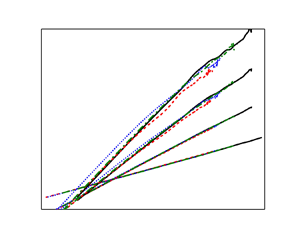Published online by Cambridge University Press: 10 May 2024

Considerable efforts have been devoted to the understanding of the small-scale characteristics in turbulent flows. While the universality of small-scale quantities has been established for incompressible flows, their extension to high-pressure transcritical flows remains an open area of research. To address this question, we investigate the real-fluid thermodynamic effects on small-scale velocity statistics of high-pressure transcritical wall-bounded turbulence. We show that in the locally isotropic region for transcritical flows, low-order moments of small-scale statistics collapse for all cases and Kolmogorov's (1941) theory holds. However, real-fluid thermodynamic effects introduce deviations in the tails of the probability density function for the velocity derivative and, consequently, high-order moments of velocity gradients and dissipation rate in transcritical flows cannot collapse in the locally isotropic region. Analysis of the intermittency shows that the low-order structure functions in transcritical flows follow extended self-similarity, while the dependence of the intermittency factor on real-fluid effects is observed for high-order structure functions. The real-fluid effects on intermittency are explained by turbulent structures related to rare events. Additionally, the dissipation rate moments for transcritical flows follow a universal scaling with Reynolds number, and the scaling exponents are different from those of incompressible flows. These results extend the small-scale universality in incompressible flows (Schumacher et al., Proc. Natl Acad. Sci. USA, vol. 111, 2014, pp. 10961–10965) to realistic flows with significant changes in thermodynamic properties, and provide a physical underpinning of the scaling laws of small-scale statistics at transcritical conditions.